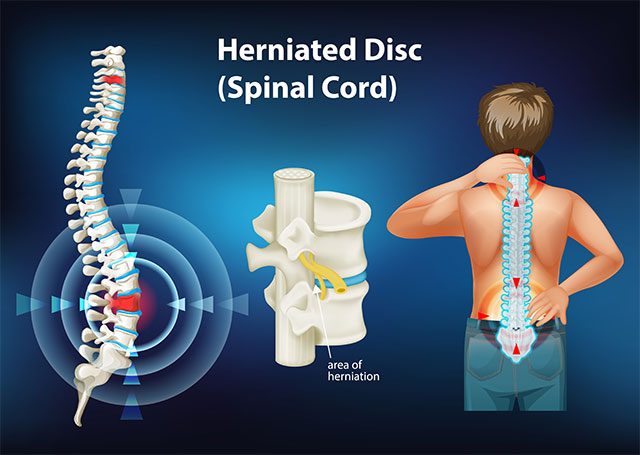Tips to Prevent Back Pain When Exercising
Few things hurt as much as pain in the lower back. It is capable of significantly dampening your daily routine, mainly if you live an active lifestyle. The good news is – you can remain active despite having back pain. The key is being aware of the exercises that would suit you and steering clear from the workouts that could aggravate your injury.
Maintaining your form is also critical. Most of the time, people suffer from back issues due to poor form while working it. You must do everything possible to ensure that you avoid this issue while you exercise. Because once it happens, the recovery period could be quite lengthy, especially if your injury is severe. Therefore, it would be best if you practiced caution and made sure that you follow important prevention tips to avoid lower or upper back injuries.
Several studies claim that physical activity can decrease pain symptoms in some people, not only for lower backs but also for arthritis and osteoporosis. Some research pieces also indicate that weight training programs could improve short and long-term back pain symptoms.
The Importance of Maintaining a Neutral Spine
Your muscles are most stable and robust when your spine is in a neutral position. Maintaining it while you work out will significantly reduce your chances of getting injured. There are two critical reasons why keeping a neutral spine helps:
- Your backbone has facet joints that lie in the center. It helps them to distribute the forces of compression away from the discs. Extra pressure is arguably the most significant reason behind disk herniation.
- Keeping your spine neutral ensures that your lower back muscles remain at an optimal length, keeping them safe from bending in unfavorable positions.


It doesn’t matter if you are performing compound or auxiliary exercises, keeping your spine neutral is critical. Think of your vertebral column as a pillar that provides support to your body. It functions and moves as a single unit. You can ensure that your spine is neutral by checking that your vertebrae remain aligned without moving in opposite directions.
Let’s use an everyday example to understand this idea. You went to get some water from the supermarket and are about to put massive water cases inside your car’s trunk. However, instead of listing up these boxes mindlessly, you hoist them up with a neutral spine.
Bend over by initiating with your hip movement. Instead of rounding a segment of your vertebral column, straighten your back- starting from your head to the tailbone. Once you get to the case’s handles, use your legs and hips to pick it up, without compromising your spinal integrity.
You can then stand straight (cautiously), turn your body to face your car’s trunk, and gently put the case inside it. Getting back up again is quite simple as all you need to do is push your hips back once more and reverse the movement.
The same concept applies to exercises such as squats, deadlifts, should-press, and even barbell or dumbbell curls. Our spines have three segments:
- Lumbar spine
- Thoracic spine
- Cervical spine
It is critical to ensure that these segments move into a singular unit without extending or bending oppositely. Always be mindful of doing your best to align these segments of your spine for optimal safety and health.
Start Light
Whether you’re working out with a back injury or want to prevent one, starting light is crucial. Of course, going a million miles per hour with each exercise is quite fascinating, but it never helps. It would be best to build a solid foundation from the ground up and make slow but steady additions to your workout regimen.
Keep your weights, reps, and sets on the lower side to execute your techniques correctly. Adding heavy plates to your barbell to stroke your ego could end up causing a long-term back injury. Therefore, remember to take things slowly and learn the fundamentals before increasing your intensity and incorporating challenging workouts to your regimen.
Follow These Tips to Prevent Injuries
Focus on longevity rather than short-term results. Of course, some people get away with using poor form and remain injury-free, but cases like these are rare. Instead, follow these tips to prevent back pain when exercising, to continue your fitness lifestyle without interruptions:
Focus on Consistency
Consistency is critical for every workout enthusiast. While learning and executing the correct techniques is not that complicated, remembering them every day could be. Always make sure that you stretch your body and lift your weights the right way every day. Repeat the movements until they become second nature to you. It is the only way you can get rid of lousy lifting habits.
Pick the Weights Correctly
Yes, sometimes gyms can be full of people, and there is very little time to complete your workout. But is it an excuse to rush into things, perform your exercises and lift weights with herky-jerky movements? Not at all! Prioritize your health and hoist weights safely. You may find this surprising, but many people injure their backs by merely lifting their dumbbells or barbells incorrectly.
Moving less is often the most common response that people have for back or any other type of pain. In some cases, though, it is the opposite. Why? Because exercising is an excellent way to increase blood flow and exercise the muscles, which are critical elements that help people heal from injuries.
When is it Okay to Workout with Back Pain?
Most of the time, back pain tends to be mechanical – it occurs because of the overload caused by day to day stresses such as bad posture, sitting too much, lack of stretching etc. It is fine to exercise if these are the reasons causing you back problems. Hamstring stretches, wall-sits, and press-up back extensions are some excellent exercises to alleviate mild back pain. Also, it would be best if you went easy on the weights until you feel better.
When Should You Stop Exercising and Seek Medical Attention?
The Fitness Bible-Your Ultimate Guide To Bodybuilding And Diet:
Bodybuilding For Conditioning And Health


- Your email address will never be shared with anyone else. We respect your privacy.


